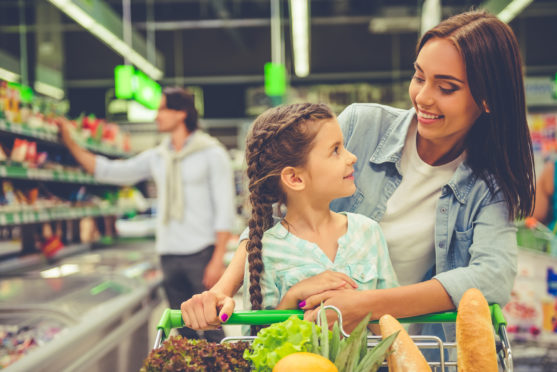
Ever gone out to buy some biscuits – and then returned home with three packets, a new outfit, and a meal-deal from your supermarket’s new food range? If so, you’re far from alone in being seduced by the big stores’ tempting offers.
Whether or not the food shop is something you enjoy doing, many of us will end up coming out of the store with our trolleys piled much higher than we’d originally intended – which will come as no surprise to those behind the nifty tactics big shops employ.
So, how exactly are supermarkets tempting us to part with more cash than we planned to? Here, Andy Barr, retail expert and founder of Alertr.co.uk, which tracks product prices, looks at the psychology behind supermarket shops and why some visits can lead to impulse buys and spending more money than we bargained for…
The store layout
The design and functionality of a store can have a powerful effect on not only the way people buy, but also how much they buy. Stores’ use of space encourages people to explore sections they would otherwise avoid, and encourage them to make purchases they mightn’t need otherwise. Some stores will theme the way they display items, so that people can imagine themselves in certain bedroom, kitchen and living room layouts.
Taking a more subtle approach, supermarkets encourage additional customer spending by offering deals and discounted products at the front of the store. They then ensure products falling under the alcohol and beauty categories are stocked at the back of the store, in order to allow customers to feel as though they’ve saved enough money (elsewhere) to justify more costly purchases.
Promotions at eye-level
Promotions that are too good to miss out on will always catch your eye, right? That’s because they are normally displayed at eye-level. This is a clever tactic to encourage you to spend. You might not want that product, and it’s not on your shopping list – but it’s on offer, so why not? Next time you are at a supermarket, be sure to notice the promotions set out to meet your focus.
Impulse buys at the till
You’ve finished your weekly shop and you’re finally at the check-out.
While waiting in a queue, it can be hard not to add tempting products to your conveyor belt. Take a pause to evaluate your impulse purchases.
Free samples
Who doesn’t love the chance of free food? If that free sample turns out to be good, you’ll want more, which means making a purchase.
Offers which may not be as good as they first seem
Whether it’s “purchase three items to get the fourth free”, or two for £2, there’s a tactic involved here that is determined to make you part with your money. Do you even need four in the first place? Probably not. You’re already buying one, being tempted into buying two more you don’t necessarily need, just to get a fourth for free! With multiple purchase deals, always check original prices to make sure your savings are actually significant, and ensure any item purchased in bulk is something you’ll use on a regular basis.
The 99p tactic
Stores will stick 99p on the end of many products. If something costs £39.99, customers looking to spend no more than £40 may be tempted, regardless of the fact they are only saving 1p.
Lighting
Supermarkets use a lot of bright lights. If you can’t see the products or those discounts clearly, you probably won’t buy or be bothered to look closely. If everything is easy to see you are more than likely to spend more cash.

Enjoy the convenience of having The Sunday Post delivered as a digital ePaper straight to your smartphone, tablet or computer.
Subscribe for only £5.49 a month and enjoy all the benefits of the printed paper as a digital replica.
Subscribe